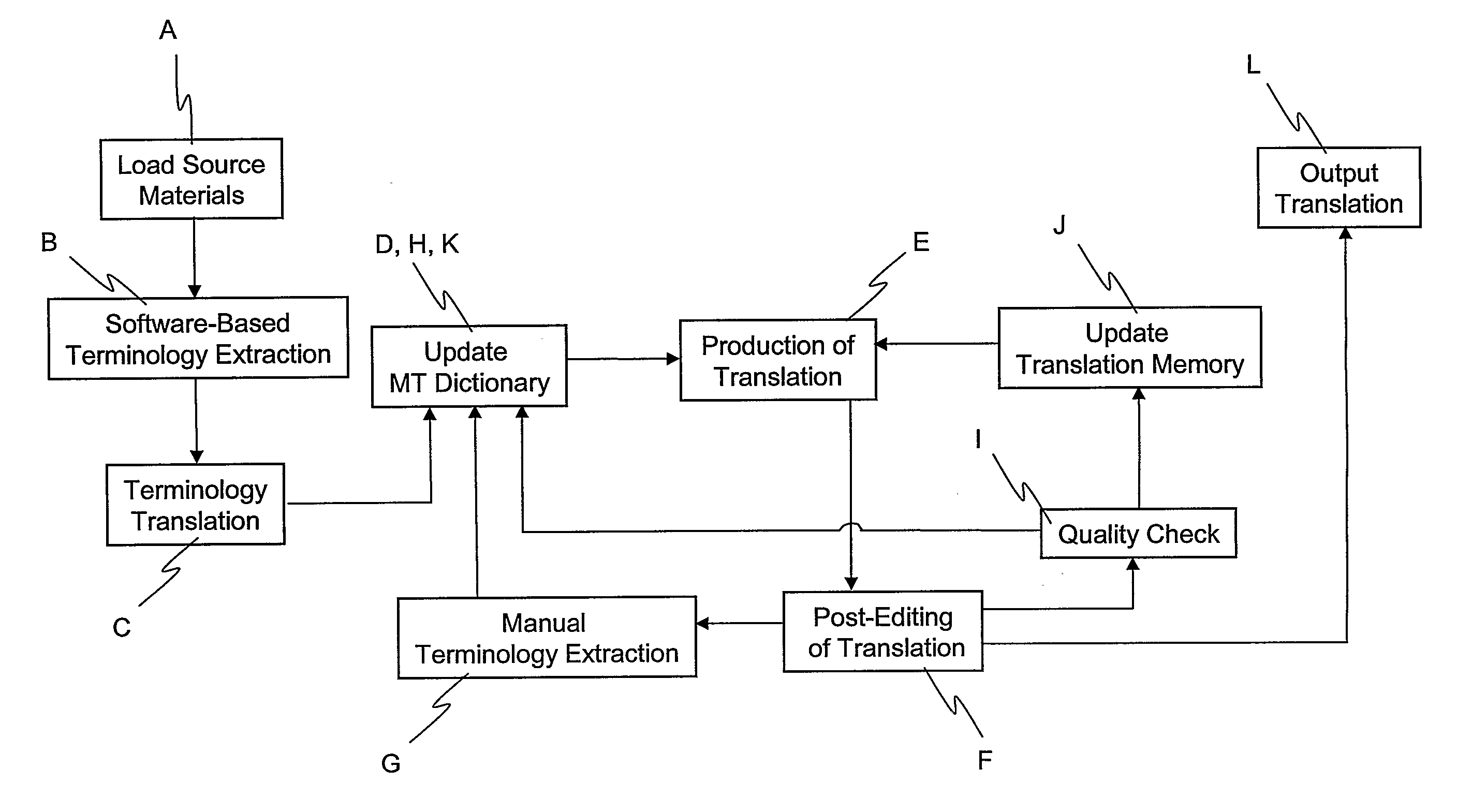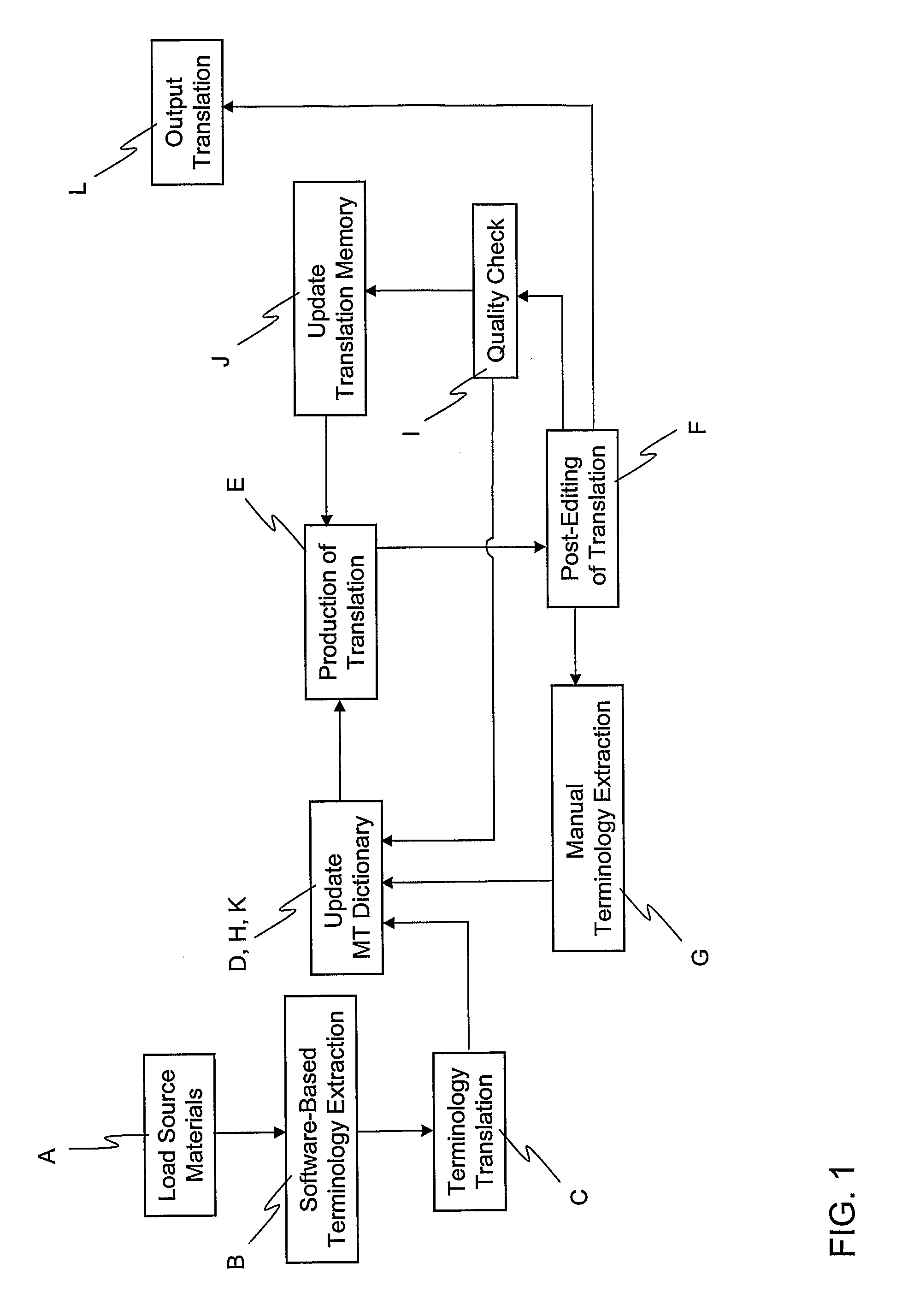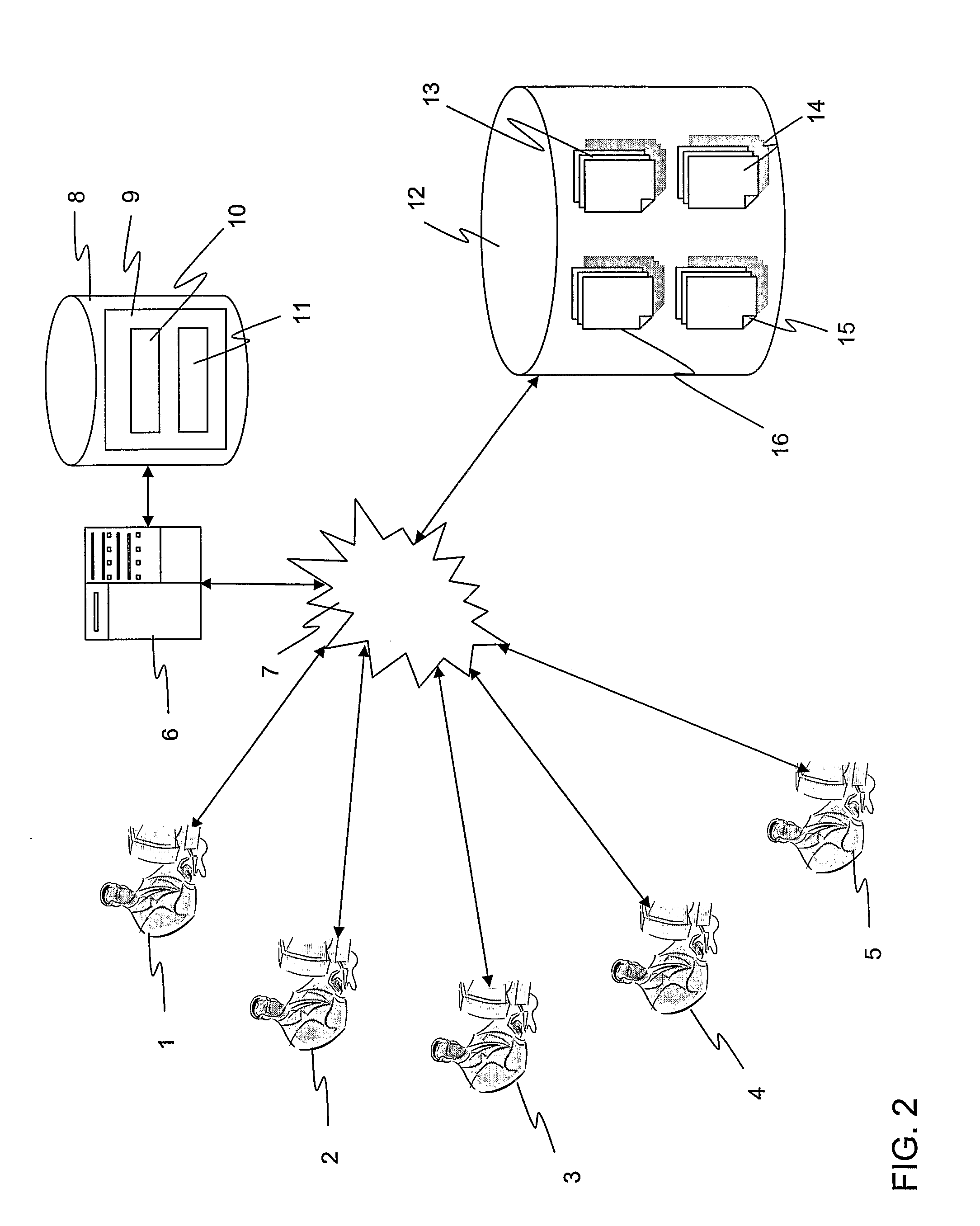Computer-Implemented Method for Use in a Translation System
a technology of computer implementation and translation system, applied in computing, electric digital data processing, instruments, etc., can solve the problems of inability to guarantee success rate, large amount of manpower alone to cope with all the global translation needs of modern-day life, and large dictionaries, etc., to achieve efficient identification of terminology candidates, reduce labour time and costs, and improve the effect of efficiency
- Summary
- Abstract
- Description
- Claims
- Application Information
AI Technical Summary
Benefits of technology
Problems solved by technology
Method used
Image
Examples
example sentence
[0127] A description of the processing of an example sentence for the Word Analysis and Phrase Parsing stages is now provided. The example sentence is “It was hidden under the sofa-bed.”
[0128] Starting from step 40 in FIG. 5, this sentence is sent to the Word Analysis stage S3. The relevant data objects are cleared in step 60 and the sentence is segmented into seven source language elements in step 62. The hyphenated compound “sofa-bed” is treated as two source language elements here, and the presence of the hyphen is noted in the SENTENCE data object during the punctuation information updating step 64.
[0129] The first source language element “it” is then loaded in step 66 and reduced to root form in step 68 by applying the inflection rules of item 84. The root form is then checked in step 70 by reference to the lexical database of item 86, and the singular pronoun is saved to the current sentence data object SENTENCE in the word information updating step 72. The current terminolog...
PUM
 Login to View More
Login to View More Abstract
Description
Claims
Application Information
 Login to View More
Login to View More - R&D
- Intellectual Property
- Life Sciences
- Materials
- Tech Scout
- Unparalleled Data Quality
- Higher Quality Content
- 60% Fewer Hallucinations
Browse by: Latest US Patents, China's latest patents, Technical Efficacy Thesaurus, Application Domain, Technology Topic, Popular Technical Reports.
© 2025 PatSnap. All rights reserved.Legal|Privacy policy|Modern Slavery Act Transparency Statement|Sitemap|About US| Contact US: help@patsnap.com



